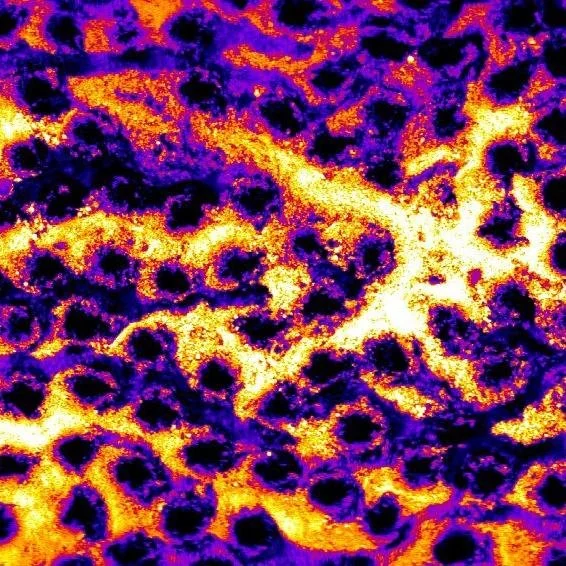Complex dynamics of complex fluids
The flow of polymer solutions, particulate suspensions, and immiscible liquid mixtures through tortuous porous media is critical to many energy, environmental, and industrial processes. These fluids exhibit flow behavior considerably more “complex” than that of simple fluids like air and water: As they are transported, the fluid microstructure deforms, resists deformation, and thereby alters subsequent flow in turn. A long-standing challenge in the field of rheology is to visualize and thereby better understand this coupling between flow and microstructure.
Our lab has overcome this challenge by developing a way to directly image complex fluid transport in situ in 3D porous media. Guided by our experimental observations and numerical studies of dynamic networks, we develop theoretical models that describe how these coupled effects influence macroscopic fluid transport. Our main thrusts and research questions include:
Viscoelastic polymer solutions
The elasticity of a polymer solution can cause it to become unstable if it flows sufficiently fast [Physical Review Fluids 2022]. We discovered that, contrary to previous conjecture, this elastic instability is not suppressed by porous confinement; instead, it can produce fascinating chaotic flow behavior, despite the low Reynolds number [J. Fluid Mechanics 2020]. This discovery explains why polymer solutions exhibit “flow thickening” in porous media [Science Advances 2021], resolving a puzzle in the field that had eluded explanation for >50 years. It also helps provide guidelines to harness elastic flow instabilities for homogenizing fluid transport [J. Fluid Mechanics 2023, J. Chromatography A 2024] and enhancing flow chemistry [PNAS 2024].
Building on these advances, we continue to investigate: What are the characteristics of these flow instabilities? Under what conditions do they arise? How are they influenced by the properties of the solution and medium, as well as operating conditions? And how can we harness these phenomena for applications e.g., homogenizing flow in heterogeneous media, removing trapped contaminants, and improving chemical reaction kinetics and yield in porous flow reactors?
Particulate suspensions
Our lab made the first direct visualization of colloidal particle spreading through 3D porous media and thereby identified that the spatial distribution of particles is controlled by an interplay between hydrodynamic stresses and colloidal interactions [Science Advances 2020]. This discovery now helps to guide the development of more accurate models of the spreading of particulate matter [Physical Review Letters 2023], such as microplastics in the terrestrial environment.
Building on these advances, we continue to investigate: How are these processes influenced by the properties of the particles and medium, as well as operating conditions? How do they influence interactions with other additional immiscible fluid phases [Physical Review Fluids 2021, Physical Review Research 2023]? And how can we use these insights for in situ control of transport and chemical processes, mediated by particles, in porous media?
Immiscible fluid mixtures
The displacement of a fluid from a porous medium by another immiscible fluid underlies groundwater contamination & remediation, subsurface carbon sequestration, oil and gas migration & recovery, and soil wetting & drying. By directly visualizing these processes in 3D porous media, we have demonstrated that they are fundamentally reshaped by structural and chemical heterogeneities inherent to many natural and engineered media [Physical Review Letters 2013, EPL 2013, Physics of Fluids 2014, Physics of Fluids 2014, PNAS 2018, Physical Review Applied 2020]. Our observations reveal phenomena that are not predicted by conventionally-used spatially-averaged models of fluid displacement, but are captured by new network models we have developed, informed by our experiments [Physical Review Fluids 2019, Physical Review Fluids 2021].
This research program is helping to shed light on the multi-scale interactions between complex fluids and porous media that have traditionally been represented in black-box models using “lumped” empirical parameters. Ultimately, our goal is to develop guidelines for the application of existing complex fluids, as well as principles for the formulation of new fluids, in controlling transport and chemical reactions in water remediation & filtration, subsurface carbon sequestration, flow reactors, and other industrial and environmental processes.
In addition to reading our papers, you can find out more about some of this research in this video lecture on viscoelastic flow instabilities.

